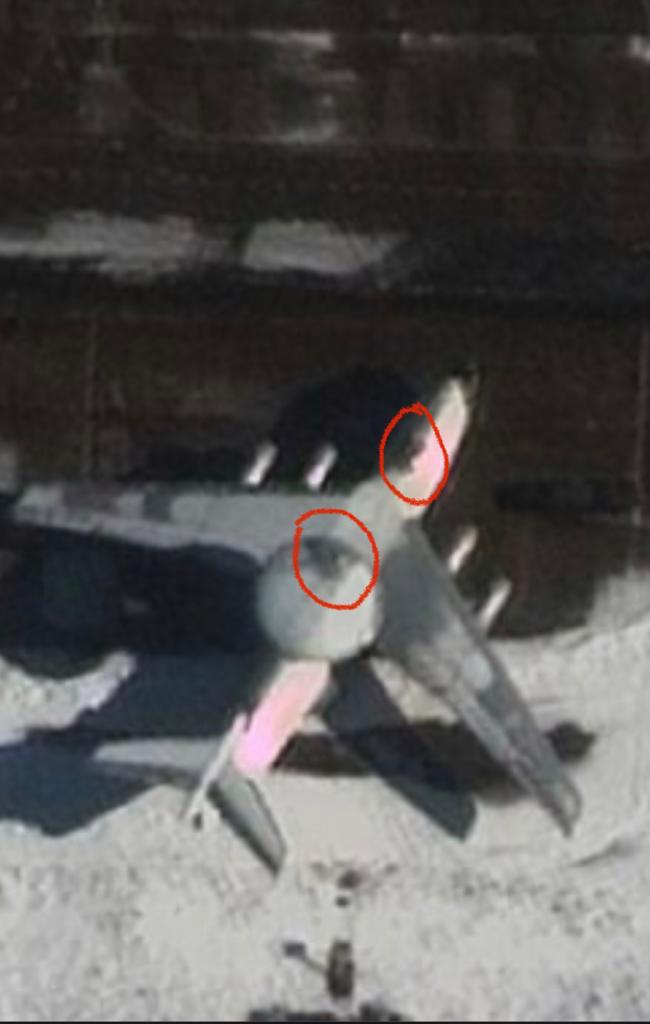A Russian A-50U Airborne Warning and Control System (AWACS) aircraft was reportedly damaged in a drone attack by a Belarusian partisan group on February 26. However, the latest satellite imagery shows no apparent signs of damage to the aircraft.
On February 26, a Ukraine-aligned Belarusian partisan group BYPOL claimed to have attacked a Machulishchy Air Base located south of Minsk.
“One of the nine AWACS of the Russian Aerospace Forces worth $330 million (was destroyed),” said a statement attributed to the group on one Telegram channel.
“These were drones. The participants of the operation are Belarusians. (They have attained) ‘Victory’ and are now safely outside the country. Everyone has left. Let them now look for the wind in the fields,” said one statement attributed to the head of the BYPOL association, Alexander Azarov.
Shortly after the claimed incident supposedly took place, Belarusian security agencies found a bag with drone control panels, which corroborated the claims by BYPOL.

The Belarusian group reportedly used two drones in this attack and claimed to have exploited its large size and damaged the aircraft in several places, including the front and central parts of the plane, avionics, and radar antenna.
“We note that A-50U is quite a ‘convenient’ target due to its large (more than 10 meters in diameter) fiberglass dome, where a rotating antenna of the Shmel radar system is located,” read the tweet by the Belarusian Hajun Project.
BYPOL said that the aircraft “definitely won’t fly anywhere.”
However, the satellite imagery from Planet Labs, dated February 28, shows the A-50 AEW&C aircraft that was supposedly attacked was still mostly intact at the parking area at the air base.
Satellite Imagery Shows No Outright Damage
To begin with, the image confirms that the Russian A-50U was not entirely destroyed in the attack. While some shady patches on the aircraft’s radome and sections of its right wing might suggest some damage, it remains unconfirmed as of yet.
Military commentators suggest these patches could be because of the snow on the aircraft’s airframe.
Overall, the aircraft in the image is seen to be generally intact. However, this is not to say that there was no damage to the plane, as several large vehicles are seen nearby the aircraft, as expected in the aftermath of an attack.
The above analysis is also confirmed by the image from Maxar shared by investigative journalist and OSINT analyst Gianluca Mezzofiore, who claimed it was taken on February 28.
Maxar has these images of the A-50 AWACs aircraft at the Machulishchy Air Base in Belarus from today. I can’t see any dramatic damage (image: @Maxar) pic.twitter.com/Smm8ULgqkh
— Gianluca Mezzofiore (@GianlucaMezzo) February 28, 2023
If there was any damage on the aircraft in some sort of a drone attack, it seems too small to be seen in the commercial satellite imagery, thereby raising questions about the overall severity of the attack and BYPOL’s claim that the aircraft “definitely won’t fly anywhere.”
According to Belarus Hajun, the A-50 in question (registration number RF-50608) arrived in Belarus on January 3. Before that, the last time it flew to Belarus was on February 24, 2022, when Russia invaded Ukraine.
This is one of the only nine AWACS aircraft in the Russian inventory, making it a highly prized possession for the Russian military. Therefore, many would tout damage to the A-50 as a significant blow to Russia.

The UK Ministry of Defense (MoD) said in an intelligence update on February 28 that “the loss of an A-50 MAINSTAY would be significant as it is critical to Russian air operations for providing an air battlespace picture.”
The UK MoD’s assessment could be especially relevant in the event of Ukraine receiving F-16s from the West, which at present seems unlikely but not impossible considering the several weapon systems like HIMARS MLRS and M1A2 Abrams tanks pledged by the US to Kyiv after initially declining the latter’s repeated request.
As EurAsian Times discussed earlier, on its own, the F-16s may not be able to change much for Ukraine in the ongoing conflict. However, if these F-16s come with NATO’s Link 16 tactical data link network, which enables all the assets on the battlefield to share the same picture, it could prove destructive for the Russian Aerospace Forces (VKS).
Because in that case, NATO could employ its AWACS airborne radar near Ukrainian air space to provide tracking information to F-16s and guide the AMRAAMs fired by them mid-flight toward their targets.
The airborne early warning capability would be critical for Russian air operations in such a situation.
- Contact the author at tanmaykadam700@gmail.com
- Follow EurAsian Times on Google News




